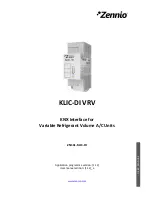
IDX Manual (V1.15 / September 26
th
, 2008)
11
Copyright © 2005-2008, TRINAMIC Motion Control GmbH & Co. KG
5
Getting Started
5.1
Motor
Attention: Do not connect or disconnect the motor while power on. Damage to the module may
occur.
Attention: A too high motor current setting can damage you motor! If in doubt, start with a low
current setting and check motor temperature. If the motor heats up very quickly, check all settings.
The motor shall never reach a temperature above 100°C under any circumstances. Some stepper
motors need contact to metallic parts to allow continuous operation. Mind the default settings, when
you operate in step / direction mode the first time! You can store your own settings in the module
permanently.
5.1.1
Motor Choice
Care has to be taken concerning the selection of motor and supply voltage. In the different chopper
modes different criteria apply. Modes 0 and 1 are quite insensitive to the motor choice, while Mode 2
is very sensitive, because it uses a different motor current regulation scheme. This chapter gives some
mathematical information on the motor choice, but you can skip it if you want to experiment with a
given motor. Normally, best results will be achieved when operating the given motor in a range of 50
to 100% of nominal motor current (see motor data sheet). Mode 2 and mode 1 are mainly intended
for slow, smooth and very exact movements, due to the high microstepping resolution. For most
dynamic operation choose mode 0, or the combined modes 3 and 4 which use mode 1 or 2 for slow
movements and switch to mode 0 at a defined velocity.
5.1.1.1
Motor velocity
Whenever it is desired to maximize the motor velocity in a given application, it is important to
understand limitations due to supply voltage and motor inductivity. Please consult your motor data
sheet for this, as well as the choice of the chopper mode. Chopper mode 0 allows maximum motor
velocity.
5.1.1.2
Chopper Modes 0 (SPI / Default Mode) and 1 (PWM)
In these two modes the maximum supply voltage (V
S
) of the motor must not exceed 22-25 times the
nominal motor voltage (V
N
), regarding the multiplication of I
COIL, MAX
and R
MOTOR
. A higher value would
lead to an excess of motor rating.
The minimum supply voltage has to be above two times the nominal motor voltage.
MOTOR
MAX
,
COIL
N
N
S
N
R
I
V
V
25
...
22
V
V
2












































